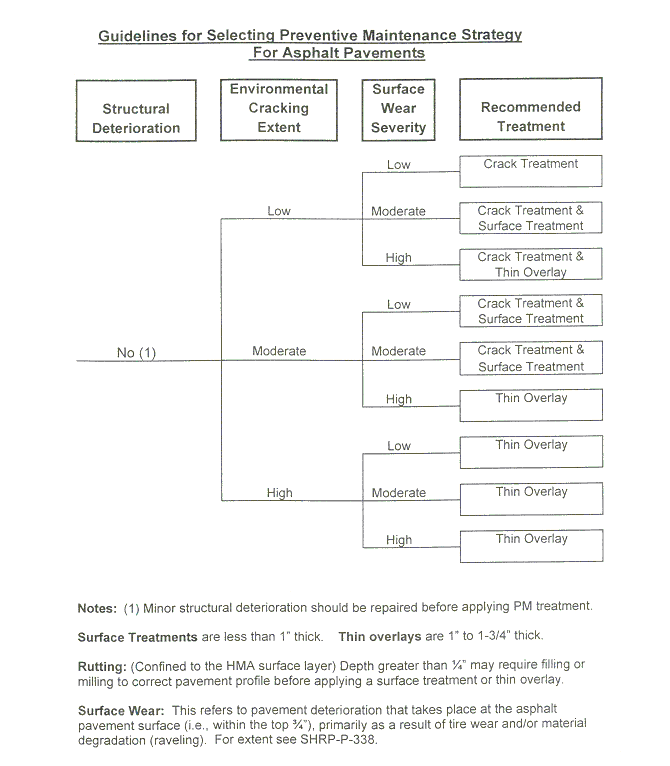Category:413 Surface Treatments and Preventive Maintenance
What Is Preventive Maintenance?
One of the goals of MoDOT is to "take better care of what we have." Preventive maintenance is the planned strategy of cost-effective treatments to an existing roadway system that preserves the system, retards future deterioration, and maintains or improves the functional condition of the system without substantially increasing structural capacity.
Pavement preventive maintenance is the application of one or more treatments, generally to the surface of a structurally sound roadway. It is performed before the pavement exhibits significant distress and provides for a more uniform performing pavement throughout its design life.
The term "maintenance" can have a different meaning to different people. To some, it is any action intended to keep a facility or its parts functioning as originally designed and constructed. To others it is the act of keeping fixed assets in an acceptable condition, that is, keeping conditions good enough, rather than at initial design levels. Regardless of the definition, maintenance activities are generally categorized as being either "reactive" or "preventive" depending on the intended purpose.
Reactive or corrective maintenance is performed after a deficiency occurs such as a pothole. This is generally little more than a stop-gap approach to keep traffic moving in a safe manner and does not contribute to the long-term performance of the pavement.
Preventive maintenance is performing surface treatments to protect and preserve the condition of the pavement such that it is either brought back to design level condition or near design level condition.
Selection of Preventive Maintenance Strategy
The following figure provides assistance in appropriate type of preventive maintenance.

Surface treatments can also be used to improve non-load associated distresses, roughness, skid resistance, and rutting not associated with unstable asphaltic concrete mixes.
To supplement the articles and maintenance planning guidelines in this category there is also a Maintenance Planning Guideline for Milling High Joints available.
Vertical Clearance
The minimum vertical clearances used in the design of grade separation structures, as set out in Bridge Reports and Layouts - Grades, include an allowance of 6 in. for future resurfacing of the facility under the structure. The preparation of plans for resurfacing projects includes the checking of the vertical clearance at grade separation structures. Reduction of vertical clearance to less than the required minimum for 3R and 4R projects should be provided in the design exception information including the existing vertical clearance and the thickness of the proposed resurfacing. Upon approval of any design exceptions to minimum vertical clearances, the project manager should notify the District Construction and Materials Engineer so measurement and posting of final vertical clearance is coordinated (See reporting procedures for vertical clearance for more information).
For information on erection of vertical clearance signs, see Warning Signs - Low Clearance Signs.
Articles in "413 Surface Treatments and Preventive Maintenance"
The following 10 pages are in this category, out of 10 total.